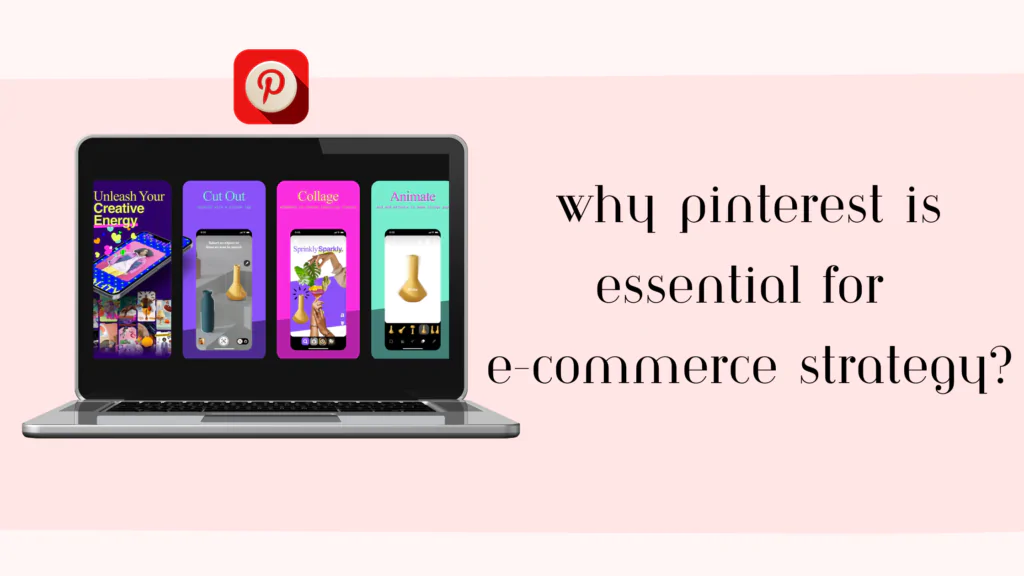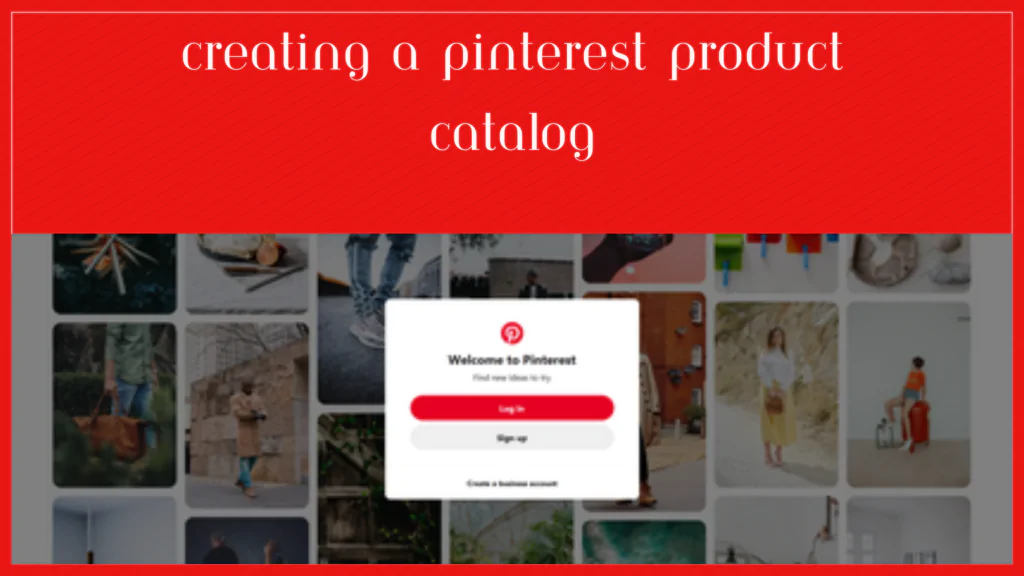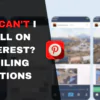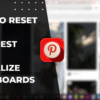Table of Contents
Pinterest E-commerce Integration: Proven Strategies
In the ever-evolving landscape of e-commerce, Pinterest E-commerce Integration has emerged as a powerful tool for businesses to leverage the platform’s visual appeal and engaged user base. By seamlessly integrating your online store with Pinterest, you can showcase your products in a visually compelling manner, drive targeted traffic to your website, and ultimately boost sales. Whether you’re a seasoned e-commerce veteran or just starting out, mastering the art of Pinterest E-commerce Integration is crucial for staying ahead of the competition and tapping into the platform’s vast potential for revenue growth and customer engagement.

How to Use Pinterest for E-commerce?
Pinterest has evolved from an idea-sharing platform to a powerful e-commerce hub. With its highly visual nature and engaged audience, businesses can leverage Pinterest to showcase products, drive sales, and foster brand loyalty. Whether you’re a seasoned e-commerce veteran or just starting out, utilizing Pinterest as part of your marketing strategy is a must.
To unlock the full potential of Pinterest for e-commerce, you need to understand its unique features and capabilities. From creating an optimized business account to leveraging shoppable pins and promoted content, the platform offers a wealth of opportunities for businesses to connect with their target audience and boost sales.
In this comprehensive guide, we’ll explore the ins and outs of using Pinterest for e-commerce success. We’ll cover everything from setting up your account and optimizing your product pins to leveraging Pinterest’s powerful analytics and advertising tools. Whether you’re looking to increase brand awareness, drive traffic to your online store, or boost conversions, this guide has got you covered.
Creating a Pinterest Business Account
The first step to unlocking Pinterest’s e-commerce potential is to create a business account. While a personal account is great for inspiration and idea-sharing, a business account provides you with access to powerful tools and features designed specifically for merchants and marketers.
Setting up a Pinterest business account is a straightforward process. You can either convert an existing personal account or create a new one. Once your account is set up, you’ll have access to the Pinterest Business Hub, where you can manage your profile, create and schedule pins, and access valuable analytics.
To ensure your business account stands out, it’s essential to optimize your profile with a compelling bio, high-quality logo, and relevant cover image. Additionally, you should create boards that align with your products and target audience, making it easier for potential customers to discover and engage with your content.
Optimizing Your Product Pins
On Pinterest, visual content is king. To capture the attention of potential customers, you need to create stunning and engaging product pins. High-quality, visually appealing images are key, but that’s just the beginning.
To optimize your product pins for maximum visibility and engagement, you’ll need to focus on several key elements. First, ensure that your pins adhere to Pinterest’s recommended aspect ratio and size guidelines, as this will ensure they display properly across various devices and platforms.
Next, craft compelling and descriptive titles and descriptions for your pins, incorporating relevant keywords and hashtags to improve discoverability. Pinterest’s search algorithm prioritizes pins with optimized titles and descriptions, so don’t overlook this crucial step.
Additionally, consider incorporating lifestyle imagery and product photos that showcase your products in real-world settings. This can help potential customers envision how your products fit into their lives, increasing the likelihood of a purchase.
Utilizing Pinterest Analytics for Insights
One of the powerful features of a Pinterest business account is access to robust analytics. Pinterest Analytics provides valuable insights into your audience, their interests, and their engagement with your content.
By leveraging these analytics, you can gain a deeper understanding of what resonates with your target audience and what types of content drive the most clicks, saves, and conversions. This information can then be used to refine your Pinterest strategy, optimize your pins, and create more targeted, engaging content.
Additionally, Pinterest Analytics offers valuable demographic data, allowing you to better understand your audience’s age, gender, location, and interests. Armed with this information, you can tailor your content and advertising efforts to better align with your target market, maximizing the effectiveness of your Pinterest e-commerce initiatives.
Why Pinterest Is Essential for E-commerce Strategy?
As an e-commerce business, incorporating Pinterest into your marketing strategy is no longer just an option – it’s a necessity. With its highly visual nature and ability to drive meaningful traffic and sales, Pinterest has become a powerhouse in the e-commerce space.
One of the key advantages of using Pinterest for e-commerce is its ability to tap into the buyer’s mindset. Unlike other social media platforms, which primarily focus on social sharing and engagement, Pinterest is a destination for discovery and inspiration. Users actively seek out new products, ideas, and trends, making them prime targets for e-commerce businesses.

Additionally, Pinterest’s user base is highly engaged and primed for purchasing. According to recent statistics, 97% of the top searches on Pinterest are unbranded, meaning users are actively seeking out products and solutions, rather than specific brands. This presents a significant opportunity for businesses to showcase their offerings and capture the attention of potential customers in their discovery phase.
Increasing Brand Awareness through Pinterest
Beyond driving direct sales, Pinterest can also be a powerful tool for increasing brand awareness and fostering customer engagement. By consistently creating and sharing visually appealing, high-quality content, businesses can establish themselves as thought leaders and trusted sources within their industry.
Utilizing features like group boards and collaborative pins can also help businesses connect with influencers, industry experts, and potential customers, expanding their reach and building a loyal following. Additionally, encouraging user-generated content (UGC) and showcasing customer reviews and testimonials can further enhance brand credibility and trust.
As your brand’s presence and engagement on Pinterest grow, so too will your brand awareness and customer loyalty. This, in turn, can translate into increased traffic, sales, and long-term success for your e-commerce business.
Driving Sales with Pinterest Marketing
While increasing brand awareness and customer engagement are important goals, the ultimate objective for e-commerce businesses on Pinterest is to drive sales and revenue. Fortunately, Pinterest offers a wealth of tools and features specifically designed to facilitate e-commerce transactions.
One of the most powerful tools in your arsenal is the shoppable pin. These pins allow users to not only view and save product images but also purchase items directly from within the Pinterest app or website. By creating shoppable pins for your products, you can streamline the buying process and reduce friction, making it easier for customers to complete purchases.
Additionally, Pinterest’s advertising platform offers a range of options for promoting your products and driving traffic to your online store. From promoted pins to shopping ads and retargeting campaigns, businesses can leverage Pinterest’s advertising tools to reach their target audience at various stages of the buyer’s journey.
Understanding the Future of Pinterest for E-commerce
As the e-commerce landscape continues to evolve, Pinterest remains at the forefront of innovation, constantly introducing new features and capabilities to enhance the shopping experience for both businesses and consumers.
One of the most exciting developments in recent years has been the introduction of visual search capabilities. Pinterest’s Lens feature allows users to snap a photo of an object or scene and find visually similar products, ideas, and inspiration. This technology has the potential to revolutionize the way consumers discover and shop for products, opening up new opportunities for businesses to connect with their target audience.
Additionally, Pinterest has been working on improving its recommendation engine, using machine learning and artificial intelligence to better understand user behavior and preferences. This will enable the platform to deliver more personalized and relevant content to users, increasing the likelihood of conversions and sales for businesses.
Optimizing Product Pages on Pinterest
While creating visually stunning and optimized pins is essential, it’s equally important to ensure that your product pages on Pinterest are optimized for maximum visibility and conversion. After all, these pages are often the first point of contact between a potential customer and your brand.
Start by ensuring that your product descriptions are clear, concise, and compelling, highlighting the key features and benefits of your offerings. Additionally, incorporate relevant keywords and hashtags to improve discoverability and ensure that your products appear in relevant search results.
Don’t forget to include high-quality product images from multiple angles, as well as lifestyle shots that showcase your products in action. This not only helps customers better visualize the product but also adds a personal touch that can foster emotional connections and drive purchasing decisions.
Using Keywords Effectively on Pinterest
Like any effective digital marketing strategy, keyword research and optimization play a crucial role in the success of your Pinterest e-commerce efforts. By understanding the keywords and phrases your target audience is using to search for products and inspiration, you can optimize your pins, boards, and product pages to improve visibility and drive more traffic.
Start by conducting thorough keyword research, utilizing tools like Pinterest’s own Trends tool, Google Keyword Planner, and third-party keyword research tools. Identify the most relevant and high-volume keywords related to your products, industry, and niche, and incorporate them naturally into your pin descriptions, board titles, and product page content.
Additionally, pay attention to long-tail keywords, which are more specific and often indicative of higher purchase intent. By targeting these long-tail keywords, you can increase the chances of your content being discovered by users who are further along in the buyer’s journey and more likely to make a purchase.
Creating a Pinterest Product Catalog

For e-commerce businesses with large product inventories, creating a Pinterest product catalog can be a game-changer. This feature allows you to upload your entire product catalog to Pinterest, making it easier for users to discover and shop your offerings directly from the platform.
Setting up a product catalog is a straightforward process, and Pinterest offers integrations with many popular e-commerce platforms, such as Shopify, WooCommerce, and BigCommerce. Once your catalog is set up, your products will automatically be transformed into shoppable pins, complete with pricing and purchase information.
By creating a product catalog, you not only streamline the shopping experience for your customers but also gain access to valuable insights and analytics. Pinterest provides detailed data on which products are generating the most engagement, clicks, and sales, allowing you to optimize your product listings and marketing efforts accordingly.
Implementing Shoppable Pins for Direct Sales
One of the most powerful e-commerce features on Pinterest is the shoppable pin. These pins allow users to not only view and save product images but also purchase items directly from within the Pinterest app or website, without ever having to leave the platform.
Implementing shoppable pins can significantly reduce friction in the buying process, making it easier for customers to complete purchases and increasing the likelihood of conversions. To create shoppable pins, you’ll need to connect your e-commerce platform to Pinterest and enable the shoppable pin feature.
In addition to streamlining the checkout process, shoppable pins also provide valuable data and insights into user behavior and purchasing patterns. You can track which pins are driving the most sales, as well as gather information on your customers’ preferences and interests, helping you refine your product offerings and marketing strategies.
Maximizing Results with Pinterest Advertising
While organic reach and engagement on Pinterest are essential, leveraging the platform’s advertising capabilities can significantly amplify your e-commerce efforts and drive even greater results. Pinterest offers a range of advertising options, including promoted pins, shopping ads, and retargeting campaigns, to help businesses reach their target audience and achieve their marketing goals.
Promoted pins are a powerful way to increase visibility and drive traffic to your product pages or website. By promoting your top-performing pins, you can ensure that they are seen by a wider audience and increase the chances of engagement and conversions.
Shopping ads, on the other hand, are specifically designed for e-commerce businesses. These ads showcase your products directly in users’ feeds, making it easy for them to click through and make a purchase. Additionally, Pinterest’s retargeting capabilities allow you to re-engage with users who have previously shown interest in your products or visited your website.
Designing a Successful Pinterest Ad Campaign
To maximize the effectiveness of your Pinterest advertising efforts, it’s essential to design and implement a well-crafted ad campaign. Start by clearly defining your goals, whether it’s increasing brand awareness, driving website traffic, or boosting sales.
Next, identify your target audience and create buyer personas to help you better understand their interests, behaviors, and preferences. This information will inform your ad creative, messaging, and targeting strategies, ensuring that your ads resonate with the right people at the right time.
When it comes to ad creative, follow best practices for Pinterest advertising, such as utilizing high-quality, visually appealing images, crafting compelling ad copy, and incorporating relevant keywords and hashtags. Additionally, consider experimenting with different ad formats, such as video ads or carousel ads, to capture users’ attention and drive engagement.
Leveraging Pinterest’s Promoted Pins Feature

Promoted pins are one of the most powerful advertising tools on Pinterest, allowing businesses to boost the visibility and reach of their top-performing pins. By promoting your best content, you can increase brand awareness, drive traffic to your website or product pages, and ultimately, generate more sales.
When setting up a promoted pin campaign, it’s essential to choose the right targeting options to ensure that your ads are being seen by the most relevant and engaged audience. Pinterest offers a range of targeting options, including demographic targeting, interest targeting, and keyword targeting, allowing you to reach users based on their interests, behaviors, and search queries.
Additionally, Pinterest’s analytics and reporting tools provide valuable insights into the performance of your promoted pins, allowing you to track key metrics such as impressions, clicks, and conversions. By analyzing this data, you can optimize your campaigns, refine your targeting, and continually improve your ad performance over time.
Measuring ROI with Pinterest Marketing Analytics
As with any marketing effort, measuring and analyzing your return on investment (ROI) is crucial for understanding the effectiveness of your Pinterest e-commerce strategy and making data-driven decisions to optimize your campaigns.
Pinterest offers a robust suite of analytics tools, including the Pinterest Analytics dashboard and the Pinterest Ads Manager, which provide detailed insights into user engagement, traffic sources, conversion rates, and more. By tracking and analyzing these metrics, you can identify which pins, boards, and campaigns are driving the most valuable results for your business.
Additionally, consider integrating Pinterest’s analytics with your e-commerce platform or other marketing tools to gain a comprehensive view of your customer’s journey and attribute sales and revenue directly to your Pinterest efforts. This level of insight will not only help you measure your ROI but also inform future marketing decisions and strategies, ensuring that your Pinterest e-commerce initiatives continue to deliver maximum impact and value.
Conclusion
Mastering Pinterest E-commerce Integration is essential for any business looking to succeed in the modern e-commerce landscape. By following the tips and strategies outlined in this guide, you can create a compelling presence on Pinterest, optimize your product pins and pages, leverage advertising tools, and measure your success through robust analytics. Whether you’re driving sales, increasing brand awareness, or fostering customer engagement, Pinterest offers a wealth of opportunities to elevate your e-commerce efforts and achieve your marketing goals. Embrace the power of visual discovery and start your journey towards Pinterest E-commerce Integration today.









